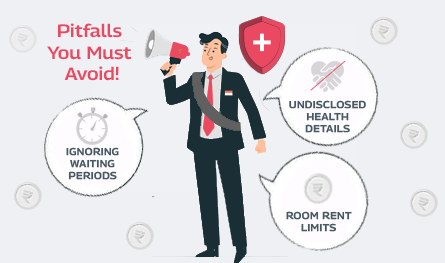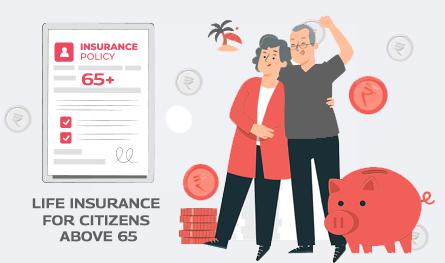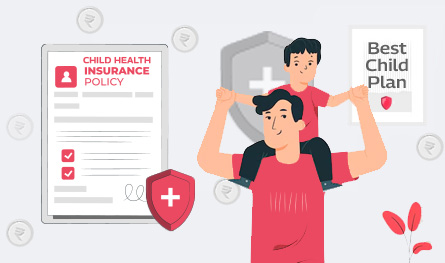What is the Deferment Period Under a Child Plan?
.png)
A deferment period is the time period from the start of a child plan till the child becomes the owner of the policy. Let’s learn more about the deferment period in insurance in this post.
.png)
As parents, if you want to secure the future of your child by saving enough capital to fulfill the dreams and career goals of your children, nothing can suit more than a child insurance plan. Thus, a child plan is the most recommended savings policy that can be used by parents to accumulate wealth to allow their kids to make their future dreams come true.
Under child plans, the owner of the policy is the one who buys the plan and who pays the premium, which, in most cases, is done by parents. Thus, you – the parent – becomes the owner of the policy while the child receives protection under the plan. Later, the child is made the owner of the policy when he/she reaches a particular age. The time period from the purchase of the child plan till the child becomes the owner of the plan is called the deferment period.
Let us discuss the meaning of deferment period in insurance and the role it plays in child plans.
Deferment Period in Children’s Policies
So, as discussed above, deferment period is the time duration from buying a child plan till the time when your child is made the owner of the policy. Further, the time duration from when your child is made the owner of the policy till when the policy matures or till the maturity date of the policy is termed as the deferment period stage two under child plans.
Ways in Which Deferment Period in Insurance under Child Plans Function
There are 2 stages of deferment period under which a child insurance plan works, the first is known as the deferment period, while the second one is the insurance period. As already discussed the deferment period is the duration from the start of the child plan till the child is made the owner of the plan. On the other hand, the insurance period is the time duration from the child becoming the policy owner till the maturity date of the policy. So, when the child turns 18 years of age and becomes the owner of the policy, the risk coverage of the plan starts.
Now there are certain scenarios in which you would like to know what exactly will happen to your child investment plans.
What if You Want to Surrender the Child Plan?
A child saving plan allows the policyholder to surrender the plan after three years. In this case, you would get the definite surrender value that includes 90% of premiums that were paid (excluding the ones paid in the first year) after the deferred date. In case the deferment period is less than 10 years, you also get extra 30% of premium money that you have paid.
If the deferment period is 10 year or more, you can receive cash 90% and 30% of the paid premiums given after the deferment period in insurance is completed.
Top 3 Benefits of Buying a Child Plan
There are numerous benefits of investing in a best child plan. Here are some such benefits mentioned below:
- Benefit received at Maturity – The child plan allows the insured or the nominee to accumulate a lump sum as maturity benefit that can be used for various requirements of the child. Along with sum assured, the maturity benefit also includes bonuses that are announced at the time of maturity.
- Benefits received due to Death of the policyholder – Child insurance plans also offer death benefits under the policy. In this case, if the insured or the child who owns the policy dies at the end of the deferment period in insurance, you get the death benefit. However, if the child dies before the end of the deferment period, the policyholder can receive the entire premium paid till the time of the child’s death.
- Tax Benefits under child plans – As per section 80C of Income tax, the premiums paid for child insurance policy are entirely exempted from tax. In fact, the maturity amount received is also exempted from income tax as per section 10D.
Deferment Period Under a Child Plan
A deferment period is a term in a child plan during which no premiums are paid, and the policy is not in force. This period usually occurs when the child reaches a specific age, such as 18 or 21 years old. During this time, the policyholder can defer the payment of premiums but still retain the policy's benefits.
The length of the deferment period depends on the child plan's terms and conditions. It can be as short as one year or as long as several years. The policyholder should check the policy documents to know the exact length of the deferment period.
No, the policyholder cannot make any changes to the policy during the deferment period as it is not in force. However, the policyholder can resume the policy after the deferment period by paying the premiums due.
If you miss paying the premiums after the deferment period ends, the policy will lapse, and you will lose all the benefits associated with it. You will not be eligible for any benefits or payouts under the policy, and the policy will become void.
No, a deferment period is not mandatory in a child plan. It depends on the policy's terms and conditions, and the policyholder can choose to opt for or not opt for a deferment period. However, a deferment period can provide some flexibility to the policyholder in terms of premium payments and can be helpful in planning for a child's future.

Author Bio
Paybima Team
Paybima is an Indian insurance aggregator on a mission to make insurance simple for people. Paybima is the Digital arm of the already established and trusted Mahindra Insurance Brokers Ltd., a reputed name in the insurance broking industry with 21 years of experience. Paybima promises you the easy-to-access online platform to buy insurance policies, and also extend their unrelented assistance with all your policy related queries and services.
Other Life Insurance Products
Latest Post

Health insurance plans are purchased with the hope of medical protection in times of need. However, sometimes it ends up being a source of surprise and disappointment. This mostly happens when people rush to buy health insurance plans, often overlooking essential aspects. Ignoring waiting period clauses, misunderstanding exclusions, and being unaware of sub-limits can lead to unwanted problems in the future.


Term insurance is an important investment. However, with the availability of so many insurers offering term plans, it becomes difficult to select the best term plan to suit your needs. Buying a term plan needs some consideration and research on the part of the policyholder. In this post, let us discuss the best term insurance providers in India.


If you think of life insurance, chances are you are picturing something people buy in their 30s or 40s. But what if you are 65 or older and just getting started? The good news is that you are never too late. Whether you are thinking of easing the financial burden on your family, covering final expenses, or simply leaving behind a legacy, there are life insurance options tailored just for you.
This article will be a guide to life insurance for senior citizens above 65 years, explaining why it is important, the type of insurance options, and how to get the right policy for you.


As any parent will tell you, kids come with two things: endless energy and absolutely no sense of self-preservation. From scaling chairs and tables like mountaineers to catching germs within a five-mile radius, kids really know how to keep everyone on their toes. Now, it is understandable you are worried. As much as we would love to wrap our small ones in cotton wool and keep them safe forever, real life has other plans.

.png)
It is very important to know the car insurance cost in India so that you can find the affordable policy that you are looking for in this case.




